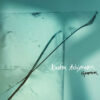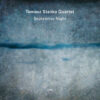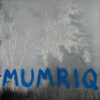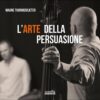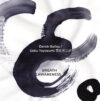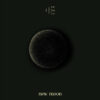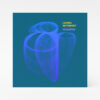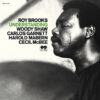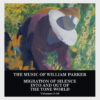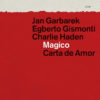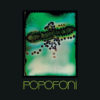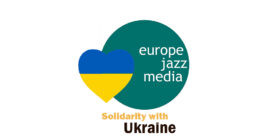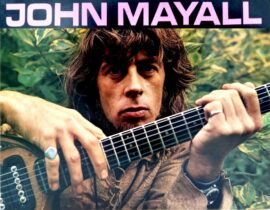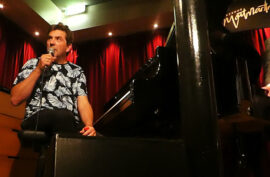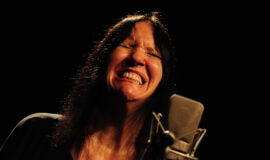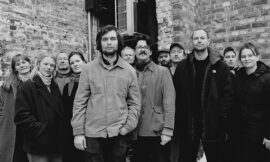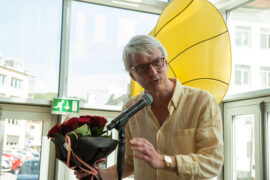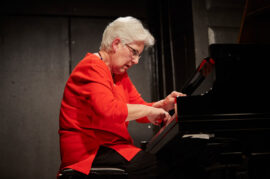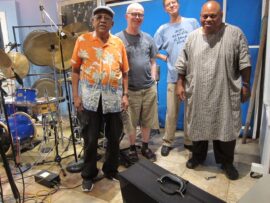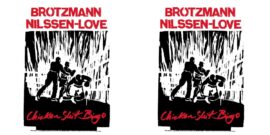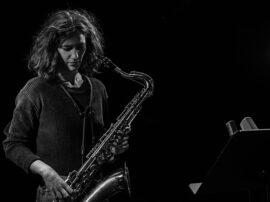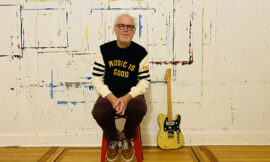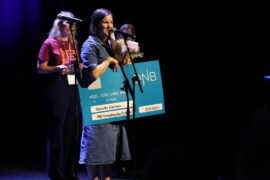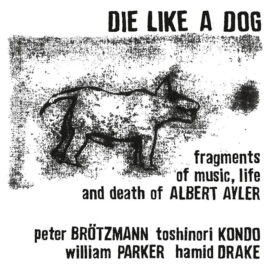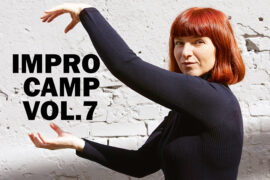
Dutch pianist-educator Albert van Veenendaal has a new label, Minimal Damge Recordings, titled after his project Minimal Damage that aims to expand the sonic range of a grand piano by preparing it accordingly (he co-founded before with double bass player Meinrad Kneer Evil Rabbit Records), and two new bands that offer poetic perspectives on our world.
The trio Rara Avis features classically-trained violinist Tineke de Jong and American, Amsterdam-based vocal artist Jodi Glibert and van Veenendaal on piano and prepared piano. Van Veenendaal claims that 3 is a magical number: «3 string players: / the strings of the violin, bowed and bent / the strings of the piano, hammered and plucked / the strings of the voice, articulated through breath and imagination // terrestrial, other-worldly, aerial displays, a strolling cadence / places reversed, combinations transformed. / a full spectrum of vocabulary, / a hidden message of sound. /translucent and effervescent!».
Rara Avis makes free improvised, chamber music, based on a wide variety of texts ranging from the eternal wisdom of the 14th century Sufi poetry of Hafez, the haiku poetry of Yosa Buson from the 18th century, prose text of F. Scott Fitzgerald (from Tender is the Night) from the 20th century and humorous New York Times newspaper headline from the 21st century. The debut album of the trio was recorded at Splendor Amsterdam in October and November 2020. How Do I Listen follows Hafez’ always relevant poetic question: «how do i listen / how / do i / listen to others? / as if everyone were my master / speaking to me / his / cherished / last / words», and attempts to suggests new, challenging ways of listening to rare and wonderfully strange universes of transparent and intriguing sounds and words. The intimate, subtle interplay of van Veenendaal and de Jong and their immediate rapport brilliantly serves the expressive, theatrical and acrobatic pathos of Gilbert making this meeting into a really rare one. Van Veenendaal refers to himself as a pictorial musician because of the epical and cinematic character of his music that cannot be easily pigeonholed. This magical strengthen this description as it flirts playfully and thoughtfully with deep philosophical dilemmas («how can paradise exist between the four walls you have placed me in?») to ordinary one about feeding a cat and more mystical one about how to attain enlightenment, including the free-associative poetry of Gilbert.
The quartet The Eye in the Needle – vocalist-violist Roosmarijn Tuenter, vocal artist Francisca Snip, cellist Rogier Hornman and van Veenendaal – explores a similar terrain. This quartet asks what it means to be human in today’s world, with songs, spoken word -mainly in Dutch but also in German and English, and poetry, with texts by Dutch walking artist, writer, performer, historian and activist Monique Besten and improvisation. The Eye in the Needle attempts to employ these insightful stories to shed new light on our current global challenges and act as modern myths and allegories. One way to listen to this quartet is as an invitation to «look in the mirror, step through it and crawl (with the quartet) through the eye of the needle».
The debut, self-titled album of the quartet was recorded at Esound studio in Weesp in July 2022. Like with Rara Avis, the atmosphere is chamber but the music here is composed, mostly by van Veenendaal, and is more lyrical, reserved and introspective, and its songs and texts are delivered without engaging eccentricities. It eventually reaches a sobering yet optimistic realization about our world. «The eye in the needle is big when i hold it in front of my eye… before i knew needles had eyes that can’t see». The last song «Being (II) / Holding» concludes with this poetic verse: «hold out your hand and imagine / what you can hold in there / an egg, a flower, a cup of coffee / a name, a destiny, a memory / a country, a shooting star, the blink of an eye / a chocolate bar, a promise, / the remains of a long forgotten past / a small universe, a vast forest / a word, a string of words, a sentence / a flashlight, a toy, a moldy apple / a pencil, a paperclip / something that holds things together / you can carve new lines next to the old ones / if you don’t like what they are telling you / you could count the half-moons on your fingernails / but you can’t wait for the full moon forever / you can hold me there / when there’s no room for me elsewhere».
Eyal Hareuveni
Tineke de Jong (violin), Jodi Gilbert (voice, spoken word, texts, little instruments), Roosmarijn Tuenter (vocals, viola), Francisca Snip (spoken word, vocals), Rogier Hornman (cello), Albert van Veenendaal (piano, prepared piano)

